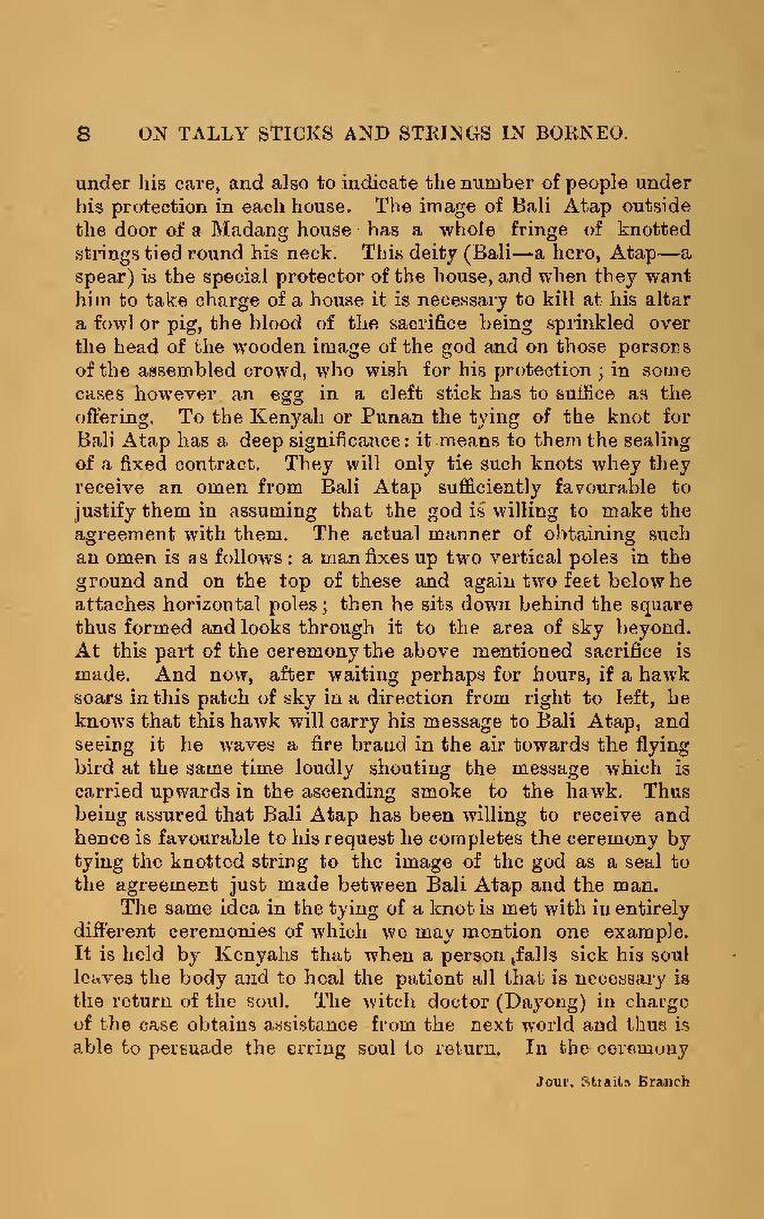under his care, and also to indicate the number of people under his protection in each house. The image of Bali Atap outside the door of a Madang house has a whole fringe of knotted strings tied round his neck. This deity (Bali—a hero, Atap—a spear) is the special protector of the house, and when they want him to take charge of a house it is necessary to kill at his altar a fowl or pig, the blood of the sacrifice being sprinkled over the head of the wooden image of the god and on those persons of the assembled crowd, who wish for his protection; in some cases however an egg in a cleft stick has to suffice as the offering. To the Kenyah or Punan the tying of the knot for Bali Atap has a deep significance: it means to them the sealing of a fixed contract. They will only tie such knots whey they receive an omen from Bali Atap sufficiently favourable to justify them in assuming that the god is willing to make the agreement with them. The actual manner of obtaining such an omen is as follows: a man fixes up two vertical poles in the ground and on the top of these and again two feet below her attaches horizontal poles; then he sits down behind the square thus formed and looks through it to the area of sky beyond. At this part of the ceremony the above mentioned sacrifice is made. And now, after waiting perhaps for hours, if a hawk soars in this patch of sky in a direction from right to left, be knows that this hawk will carry his message to Bali Atap, and seeing it he waves a fire brand in the air towards the flying bird at the same time loudly shouting the message which is carried upwards in the ascending smoke to the hawk. Thus being assured that Bali Atap has been willing to receive and hence is favourable to his request he completes the ceremony by tying the knotted string to the image of the god as a seal to the agreement just made between Bali Atap and the man.
The same idea in the tying of a knot is met with in entirely different ceremonies of which we may mention one example. It is held by Kenyahs that when a person falls sick his soul leaves the body and to heal the patient all that is necessary is the return of the soul. The witch doctor (Dayong) in charge of the case obtains assistance from the next world and thus is able to persuade the erring soul to return. In the ceremony
